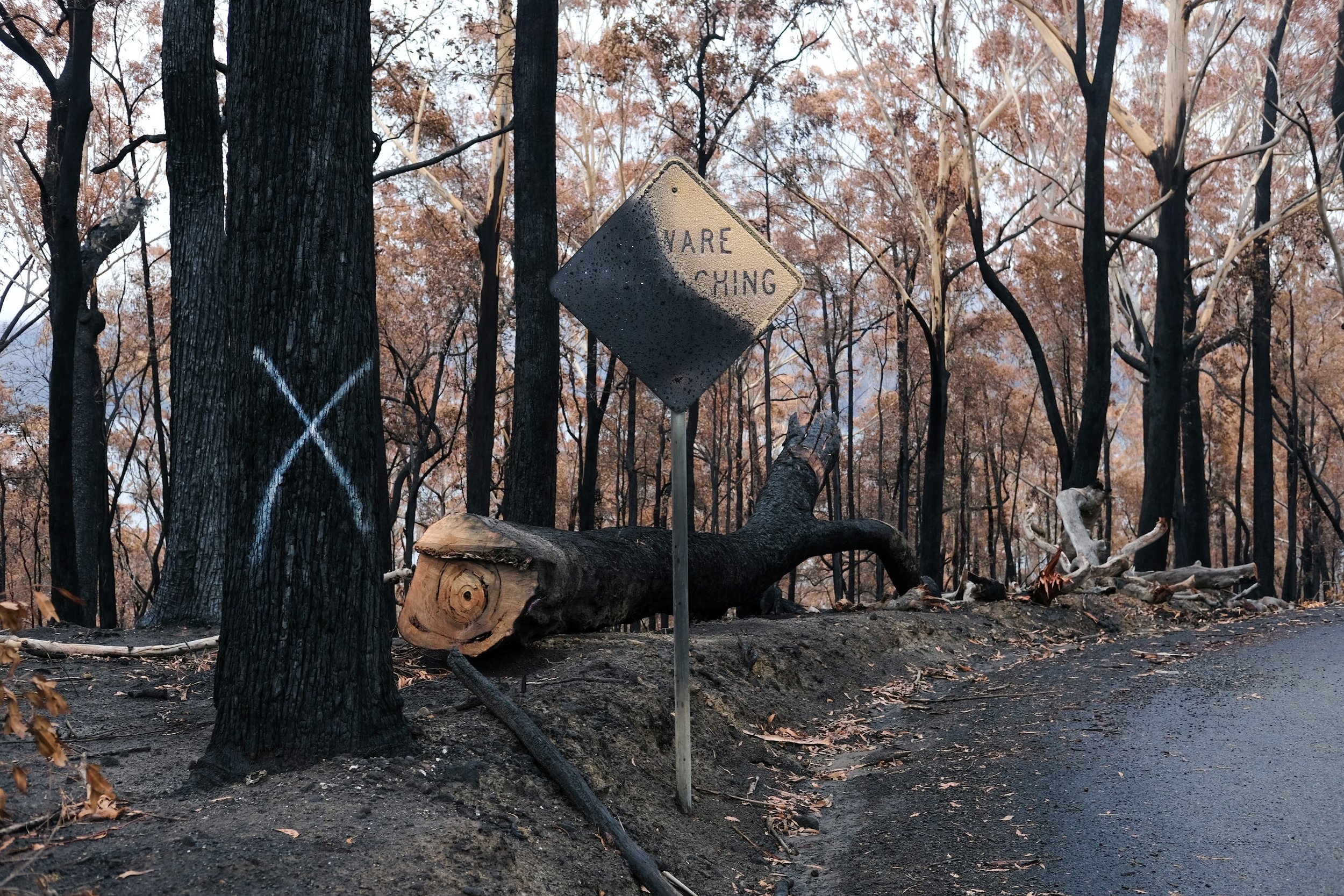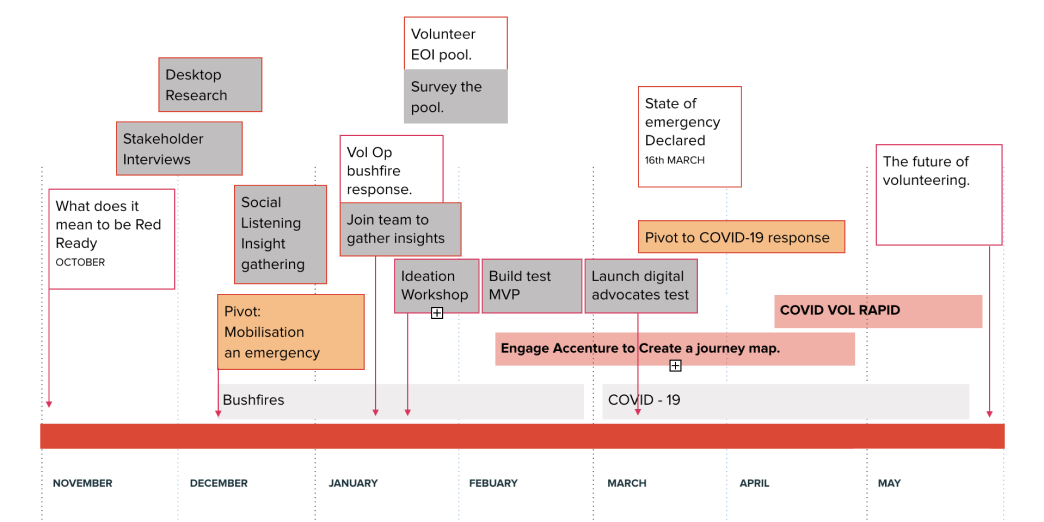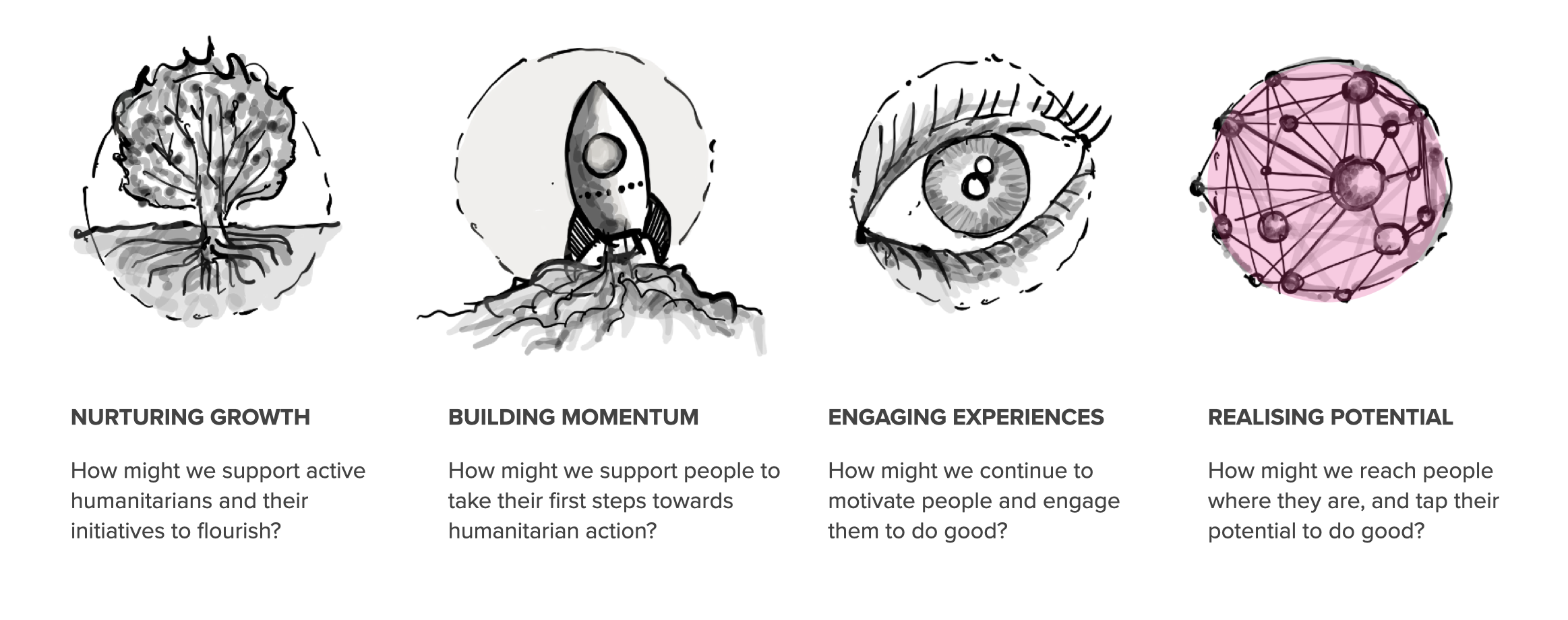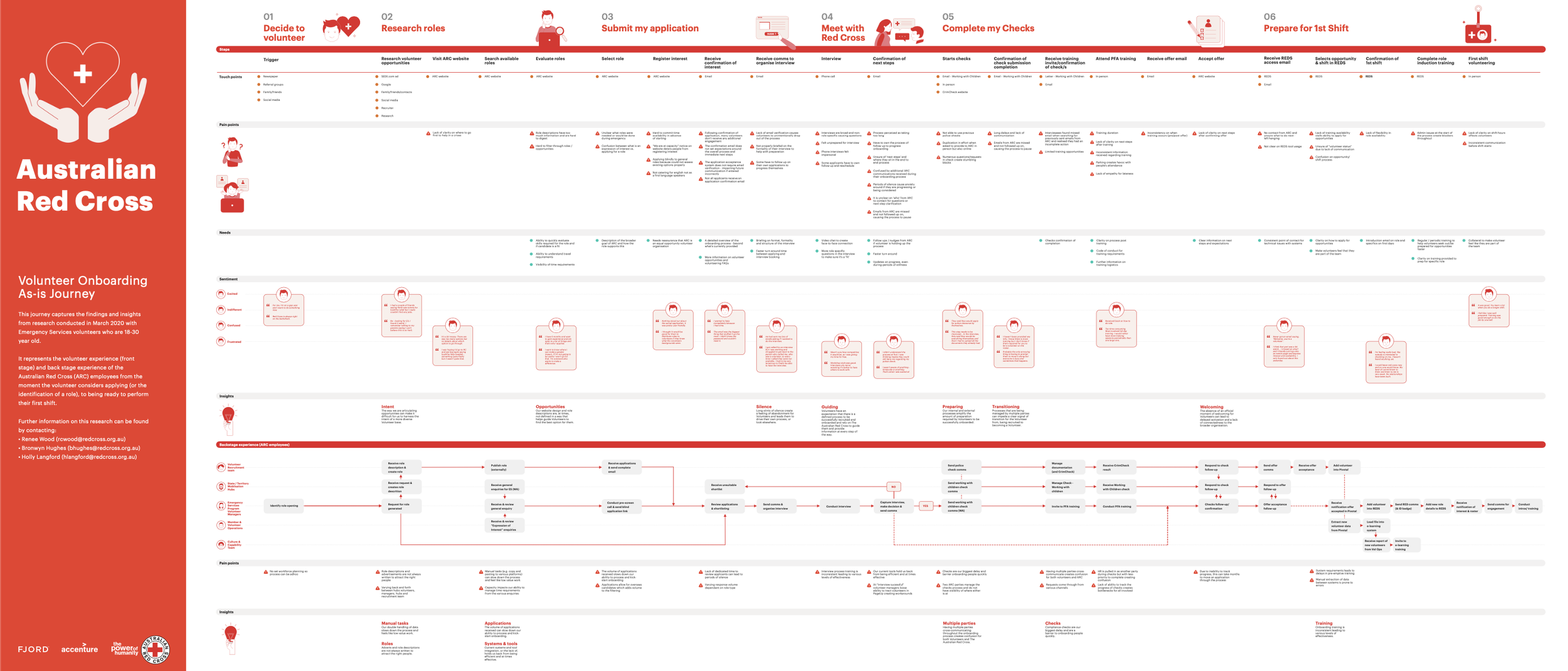
Australia Red Cross
A strategy and roadmap for the future of spontaneous volunteering.
My Role
Strategic Designer Lead
Company
Australia Red Cross
Role
Stakeholder Management
Design Lead
Customer Journey Mapping
Prototype development
Liaising with 3rd Party Suppliers
Systems Design
Designing a volunteering directorate strategy that envisions the future of volunteering and addresses identified problems and opportunities. Concepts create a roadmap forward in improving the experience of volunteers and making it easier for people to get involved in disaster relief.

Design Challenge
The Australian Red Cross doesn't have a way to harness the spontaneous intent to do good that emerges in situations people care about.
"Organisations make it hard to do good.
We need you to meet us where we are and provide opportunities that evolve with us.”
Australian Red Cross Youth Survey 2018
My Role
In this project, my role encompassed several vital responsibilities. Firstly, I was responsible for bringing the project's vision to life and effectively addressing the identified problem. To achieve this, I devised a comprehensive design approach and strategy that served as the foundation for resolving the challenges.
Furthermore, I played a crucial role in engaging with stakeholders, providing guidance, and fostering collaboration to develop a roadmap for the future of spontaneous volunteering. This involved understanding their needs and perspectives to ensure the roadmap aligned with the project's objectives.
Additionally, I coordinated with external third-party contractors to actualise the project's ideas. This required effective communication and collaboration to ensure the contractors' contributions aligned with the project's goals and vision
As part of the project's implementation, I crafted a test-and-learn framework. This framework allowed us to assess and refine our solutions through iterative testing, enabling us to improve and optimise our strategies continually.
Finally, I contributed to shaping the future roadmap and prioritisation tasks. By evaluating the project's progress and outcomes, I actively participated in deciding which initiatives should be given priority and how we should adapt our approach moving forward.
Key Challenges
Initial discussions revealed significant areas for improvement in the current volunteer onboarding process. It became clear that major stakeholders lacked an understanding of these deficits, which resulted in recruitment delays and impact stagnation.
Midway through the project, the 2020 bushfires broke out and provided a unique learning opportunity, which we used to modify our approach based on real-time needs.
A timeline of significant events during the project, detailing how the 2020 bushfires and Covid allowed a unique opportunity to pivot.


Mobilisation Opportunity Spaces
The RedxFutures team identified four primary mobilisation opportunity spaces through ethnographic research. In each project in the RedX team, we identify the space(s) that relate to the problem so that we can put them to the test and learn more about the opportunity spaces throughout the project. For this problem, the opportunity space identified was releasing potential.
Design Principles
These design principles are taken from the research into contributing behaviours and were used to inform the prototypes.
-
People find it difficult to know what to do and where to find opportunities that fit value exchange.
-
Provide clarity on how my contribution will make a difference.
People feel deflated when they don’t see the positive impact of their actions. How might we easily track contributions to various causes and impacts?
-
How might we show people new skills and resources can be acquired through various forms of contribution?
-
Connect like-minded, new/diverse community and friends and those who will take the lead so I can participate alongside them
-
How might we easily identify and contribute available resources (time, money, shareable, donatable). Efficient and effective use of my time and resources.
-
How might we make it easy for people to access new (skills, knowledge + opportunities)
-
How might we help people to feel pride in their association with a cause?
Mapping the onboarding journey
Using a design research approach supported by the team at Fjord, we studied the entire journey of an Emergency Services volunteer from the moment they first consider volunteering to the moment they are ready to start their first shift. This was important it helped to identify pain points and opportunities to improve the volunteer experience and make it easier for people to get involved with the organisation.

Value Proposition
Capture the spontaneous intent of people wanting to do good by welcoming people into the Red Cross family from day one and providing community, social connection and training that starts them on their volunteering journey.

Two concepts for testing
Two new volunteering directorate services were developed and tested: Digital Advocates and Red Cross Explorer. These concepts were developed in collaboration with key stakeholders and are based on research, insights, and initial user testing. The testing will validate the value proposition and provide more insight into the design challenge.

Creating a community of digital advocates who help share key information and start conversations that aid recovery.

A place for anyone to prepare, learn, engage and contribute to the Red Cross community before becoming a volunteer.
Red Cross Explorer
Engage in missions to grow as a volunteer
Complete certified training
Apply for roles of interest and begin preparing
Be kept up-to-date through messages. Contribute to community discussions or become a buddy
The Result
We created a unified vision and strategy for the Volunteering Directorate at the Australian Red Cross.
Human-centred design is now embedded at the heart of volunteering operations.
The vision outlines what the future of volunteering could look like—and how to get there.
Two key tests helped us gather insights and plan for spontaneous volunteering during disasters





